This series is available as PDF download at the bottom of the page.
Niklaus Wirth is a Swiss computer scientist. He developed the programming language Pascal and wrote the book “Algorithms + Data Structures”. In 1976, his theory was revolutionary. Now, it is almost common sense: Every algorithm must be predated by an exact data definition, and processes and data have to be separated.
SAP partner Data Migration Services is figuratively following in the footsteps of Wirth, and not only because they are both from Switzerland. The possibility of extracting data and functionalities of a SAP ERP system in turn opens up the decommissioning of legacy systems, legally secure archiving, the further use of data, and an efficient and secure way towards Hana, S/4, and C/4.
Data structure platform
Data Migration Services (DMS) has created a data structure platform for all data and processes of a decommissioned SAP system.
“Customers can leverage the platform as a fixed part of their desired system landscape”, DMS founder and CEO Thomas Failer explained to E-3 Editor-in-Chief Peter Färbinger. “Data and documents not necessary in day-to-day operations in S/4 can regularly be transferred to the platform. Consequently, S/4 and Hana remain lean and agile in the long term. However, up until now, systems often had to be retrofitted to keep up the necessary speed and stability. And the volume of data will increase even more with the rise of the Internet of Things.”
Finding a safe way to Hana and S/4 will remain a top priority for SAP customers until 2025. The goal is clear, but the road towards it is full of unexpected turns, dangerous, and unsafe.
“Let’s take a look at the scenario that SAP prefers: returning to the SAP standard and migrating data with its own conversion tool”, Thomas Failer says as he is trying to explain typical pitfalls on the road towards S/4 Hana. “If you have a data volume of 5 terabyte, the system downtimes while migrating would take way too long and be way too expensive. One weekend would not be nearly enough for the migration. That’s why we think that only about 10 percent of customers will actually choose this way, because only 10 percent of them realistically can.”
What about the remaining 90 percent, then? Thomas Failer says, “They have to solve the problem of only partially migrating their data to S/4 and Hana and handle what’s left intelligently.” Right now, many SAP customers do not see any other way than continuing to operate their legacy systems while also running S/4. However, this means even more migration effort and operational costs.
DMS’s concept also needs some effort, but the amount of necessary resources is way smaller. “There is some effort involved in separating operational and non-operational data and in optimizing data quality, yes”, explains CEO Failer. “However, a substantial data reduction is achieved. This reduces the number of man-days necessary for migrating major SAP implementations from about 5,000 to 2,000 or 3,000. What’s even better: this is not just a one-time benefit.”
Win-win situation for SAP customers and DMS
“We are growing substantially right now. The most important thing, however, is that the migration to S/4 is creating awareness for the change necessary to successfully deal with legacy data and systems in the future”, Thomas Failer describes the current situation for both his company and SAP customers. “This brings us to the topic of convergence. As great as our platform is, we cannot support the migration to S/4 and Hana of 50,000 SAP customers worldwide – what a number! – alone. That’s why we are currently investing in building up and educating a partner network of our own which spreads the word of our approach more and more in the community.”
Just like Data Migration Services, many SAP customers also rely on long-term partners in their respective fields. “That’s right”, confirms Thomas Failer. “That’s why, besides the development of our products, we chose to also heavily focus our efforts on expanding our partner network. This includes resellers, implementation partners including system integration as well as technology partners, for example manufacturers of ETL tools, and, last but not least, SAP itself. Because we have to be able to also dynamically manage future developments and changes in data structures with our tools, otherwise they wouldn’t continue to provide the comprehensive benefits they do today.”
But, as most people now, SAP customers are not easily convinced. Thomas Failer says, “While that’s true, it is not necessarily a bad thing. It just means that SAP customers think before they buy. They are, however, often skeptical about our products, just because they cannot believe how high our benefits are; like 80 percent less operational costs, data reduction by 75 percent, and 50 percent less migration effort. They simply cannot imagine how this would even be possible. Over the course of the last year, we actually learned a lot in that regard; about SAP customers and how we should approach them. We have to get through to customers before their migration, meaning early on in the planning process.”
As a conclusion of this E-3 talk, here’s a use case showcasing the benefits of the concept of algorithms and data structures.
“Think about machine engineering”, says CEO Thomas Failer as he tries to give an example for when and where DMS’ platform could be of help. “Machine engineering entails some processes lasting years, even decades. It’s neither useful nor reasonable to store old, almost ancient information in live systems. However, legacy information, like construction plans or maintenance reports, retain their relevancy until the machine in question has been removed or until legal retention periods expire.”




















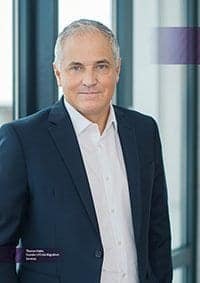
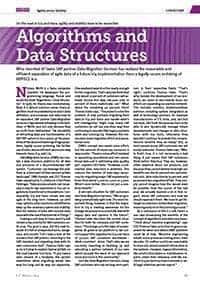
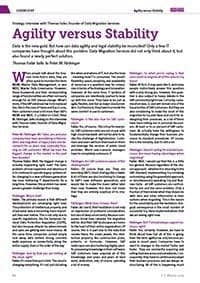
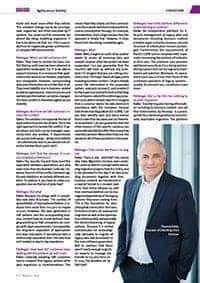
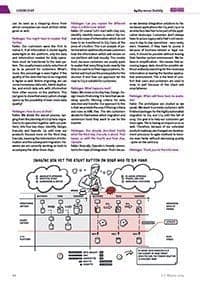
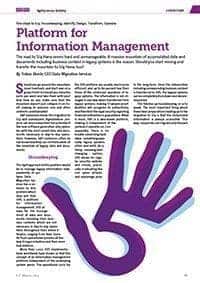
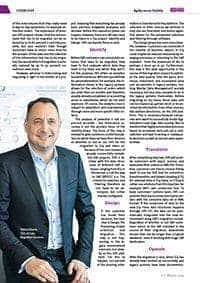
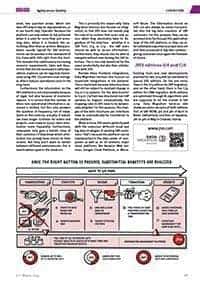

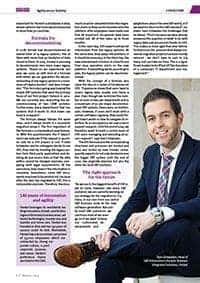


Add Comment